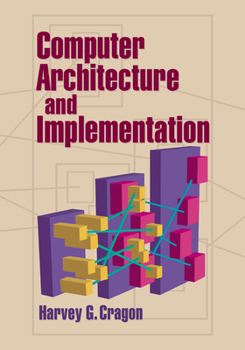< Back to Search Results
Computer Architecture and Implementation
Select Format
Select Condition 
Book Overview
This textbook provides a clear and concise introduction to computer architecture and implementation. Two important themes are interwoven throughout the book. The first is an overview of the major concepts and design philosophies of computer architecture and organization. The second is the early introduction and use of analytic modeling of computer performance. The author begins by describing the classic von Neumann architecture, and then presents in detail a number of performance models and evaluation techniques. He goes on to cover user instruction set design, including RISC architecture. A unique feature of the book is its memory-centric approach - memory systems are discussed before processor implementations. The author also deals with pipelined processors, input/output techniques, queuing modes, and extended instruction set architectures. Each topic is illustrated with reference to actual IBM and Intel architectures. The book contains many worked examples and over 130 homework exercises. It is an ideal textbook for a one-semester undergraduate course in computer architecture and implementation.
Format:Paperback
Language:English
ISBN:0521657059
ISBN13:9780521657051
Release Date:October 2005
Publisher:Cambridge University Press
Length:332 Pages
Weight:1.27 lbs.
Dimensions:0.7" x 7.0" x 10.0"
Customer Reviews
1 rating
mostly an overview
Published by Thriftbooks.com User , 25 years ago
Tries to discuss quite a lot or design rules and models, but only using Intel/IBM as examples. Not for casual readers, rather to those who is specifically studying computer architecture in college (especially with all those excercises after each chapter)






